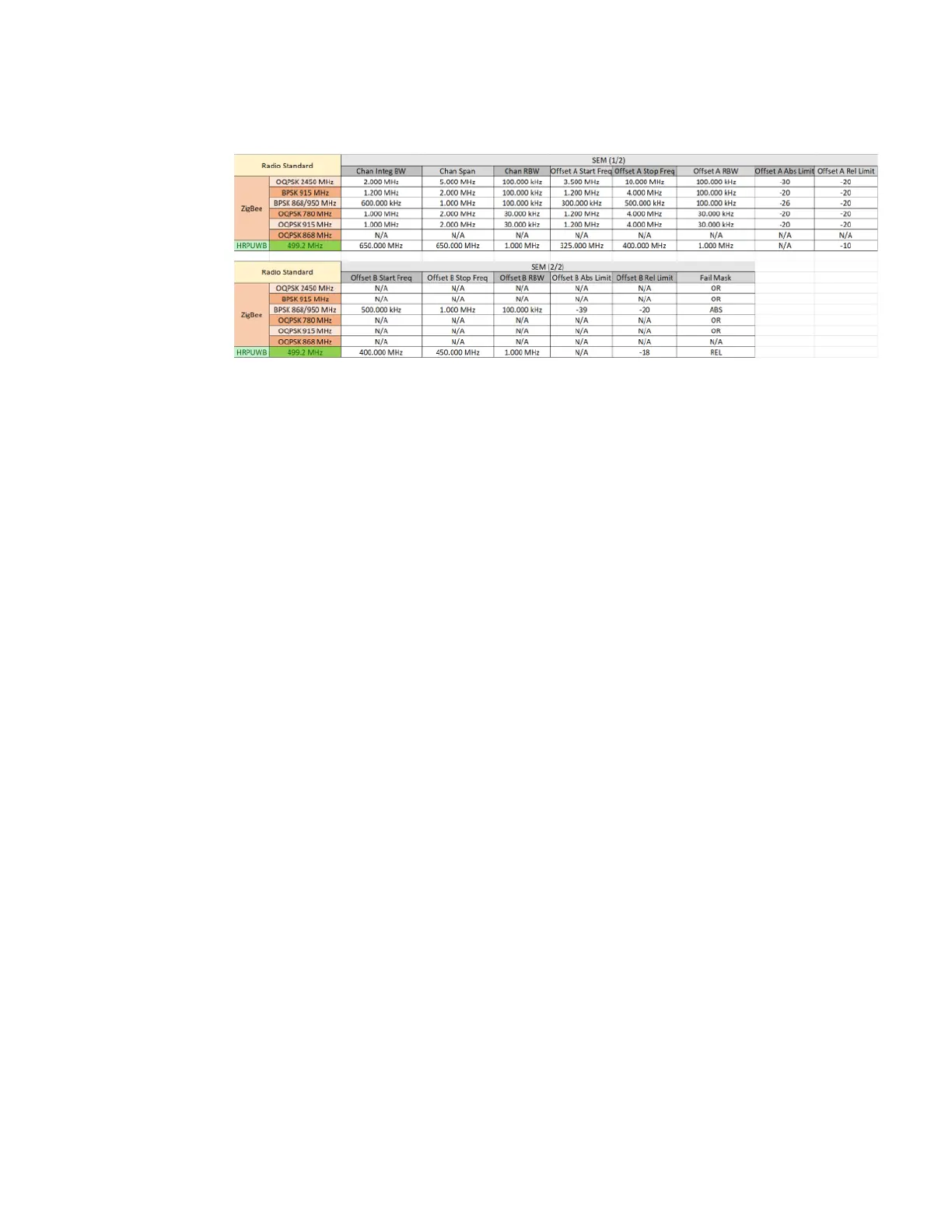3 Short-Range Comms & IoT Mode
3.10 Spurious Emissions Measurement
3.10.8.3 Advanced
Contains controls for setting advanced functions of the instrument.
This tab does not appear in VXT.
Noise Floor Extension
Allows you to turn on/configure the Noise Floor Extension (NFE) function. Some
Modes (such as Spectrum Analyzer), support two states of NFE, Full and Adaptive.
The ON state (in Modes that do not support Adaptive NFE) matches the FULL state
(in Modes that do support Adaptive NFE).
In ON or FULL NFE, the expected noise power of the instrument (derived from a
factory calibration) is subtracted from the trace data. This will usually reduce the
apparent noise level by about 10 dB in low band, and 8 dB in high band (>~3.6 GHz).
In Adaptive NFE, there is not the same dramatic visual impact on the noise floor as
there is in Full NFE. Adaptive NFE controls the amount of correction that is applied
based on other instrument settings like RBW, averaging and sweep time. Adaptive
NFE controls the degree of potential improvement in the noise floor to give more
improvement for those instrument settings that can make good use of the potential
improvement, such as settings that provide more averaging. The result is that when
not much averaging is being performed, the signal displays more like the NFE-off
case; and when lots of averaging is being performed, the signal displays more like
the full-NFE case.
Adaptive NFE (in Modes that support it) is recommended for general-purpose use.
For fully ATE (automatic test equipment) applications, where the distraction of a
person using the instrument is not a risk, Full NFE is recommended.
NFE works with any RBW, VBW, detector, any setting of Average Type, any amount
of trace averaging, and any signal type. It is ineffective when the trace is not
smoothed (smoothing processes include narrow VBWs, trace averaging, and long
sweep times with the detector set to Average or Peak). It works best with extreme
1470 Short Range Comms & IoT Mode User's &Programmer's Reference
